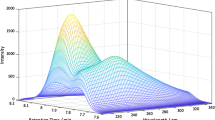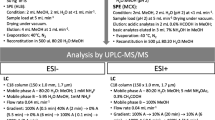Abstract
The Savannah River Site Environmental Bioassay Lab participated in the 2008 NRIP Emergency Response program administered by the National Institute for Standards and Technology (NIST) in May, 2008. A new rapid column separation method was used for analysis of actinides and 90Sr in the NRIP 2008 emergency water and urine samples. Significant method improvements were applied to reduce analytical times. As a result, much faster analysis times were achieved, less than 3 hours for determination of 90Sr and 3–4 hours for actinides. This represents a 25%–33% improvement in analysis times from NRIP 2007 and a ∼100% improvement compared to NRIP 2006 report times. Column flow rates were increased by a factor of two, with no significant adverse impact on the method performance. Larger sample aliquots, shorter count times, faster cerium fluoride microprecipitation and streamlined calcium phosphate precipitation were also employed. Based on initial feedback from NIST, the SRS Environmental Bioassay Lab had the most rapid analysis times for actinides and 90Sr analyses for NRIP 2008 emergency urine samples. High levels of potential matrix interferences may be present in emergency samples and rugged methods are essential. Extremely high levels of 210Po were found to have an adverse effect on the uranium results for the NRIP-08 urine samples, while uranium results for NRIP-08 water samples were not affected. This problem, which was not observed for NRIP-06 or NRIP-07 urine samples, was resolved by using an enhanced 210Po removal step, which will be described.
Similar content being viewed by others
References
K. G. W. Inn, Proc. 50 th Annual Conf. on Bioassay, Analytical and Environmental Radiochemistry, Cincinnati, OH, 2004, p. 113.
D. L. Stricklin, A. Tjarnhage, U. Nygren, J. Radioanal. Nucl. Chem., 251 (2002) 69.
D. Larivere, T. Cumming, S. Kiser, C. Li, R. Cornett, J. Anal. At. Spectrom., 23 (2008) 352.
C. Bouvier-Capely, J. Rhitt, N. Baglan, C. Cossonnet, Appl. Radiation Isotopes, 60 (2004) 629.
C. Li, D. Lariviere, S. Kiser, G. Moodie, R. Falcomer, N. Elliott, L. Burchart, L. Patterson, V. Epov, D. Evans, J. Smith, J. Cornette, J. Anal. At. Spectrom., 23 (2008) 521.
S. Maxwell, J. Radioanal. Nucl. Chem., 275 (2008) 497.
C. Sill, Anal. Chem., 46 (1974) 1426.
S. Maxwell, J. Radioanal. Nucl. Chem., 267 (2006) 537.
J. P. Martin, K. J. Odell, Radioact. Radiochem., 9(3) (1998) 49.
T. Chu, J. Wang, Y. Lin, Appl. Radiation Isotopes, 49 (1998) 1671.
L. A. Currie, Anal. Chem., 40 (1968) 586.
S. L. Maxwell, unpublished data.
Author information
Authors and Affiliations
Corresponding author
Rights and permissions
About this article
Cite this article
Maxwell, S.L., Culligan, B.K. Rapid separation method for emergency water and urine samples. J Radioanal Nucl Chem 279, 901–907 (2009). https://doi.org/10.1007/s10967-008-7387-0
Received:
Published:
Issue Date:
DOI: https://doi.org/10.1007/s10967-008-7387-0




